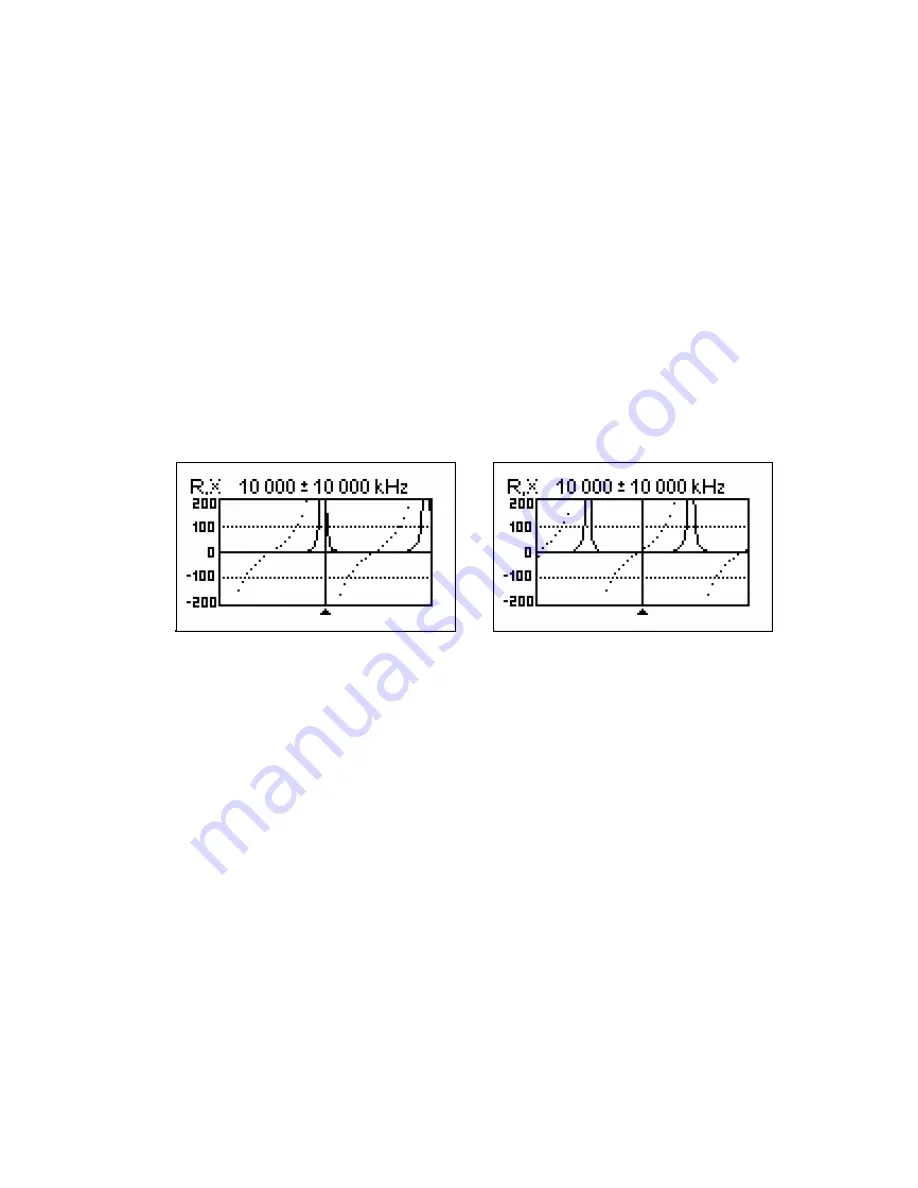
13
Physical dimensions of a simple antenna (such as a dipole) can be adjusted knowing
the actual resonant frequency and the desired one.
Other types of antennas contain more than one element to adjust (including coils,
filters, etc.), so this method will not work. Instead, you may use the
SWR mode
or the
Show all
mode to continuously see the result while adjusting various parameters of the
antenna.
For multi-band antennas, use the
Multi SWR
mode. You may easily see how one of the
adjustment elements (trimming capacitor, coil, physical length of an aerial) affects
SWR at up to five different frequencies.
5.2. Coaxial lines
5.2.1. Open- and short-circuited cables
Open-circuited cable Short-circuited cable
The above pictures show R and X graphs for a piece of cable with open- and short-
circuited end. A
resonant frequency
is a point at which X (see the dotted line) equals to
zero:
•
In the open-circuited case, resonant frequencies correspond to (left to right) 1/4,
3/4, 5/4, etc. of the wavelength in this cable;
•
For the short-circuited cable, these points are located at 1/2, 1, 3/2, etc. of the
wavelength.
[Please notice that RigExpert AA-500 displays absolute value of the reactance, |X|.]
5.2.2. Cable length measurement
Resonant frequencies of a cable depend on its length as well as on the velocity factor.
A
velocity factor
is a parameter which characterizes the slowdown of the speed of the
wave in the cable compared to vacuum. The speed of wave (or light) in vacuum is
known as
the electromagnetic constant
: c=299792458 meters per second or 983571056
feet per second.






































